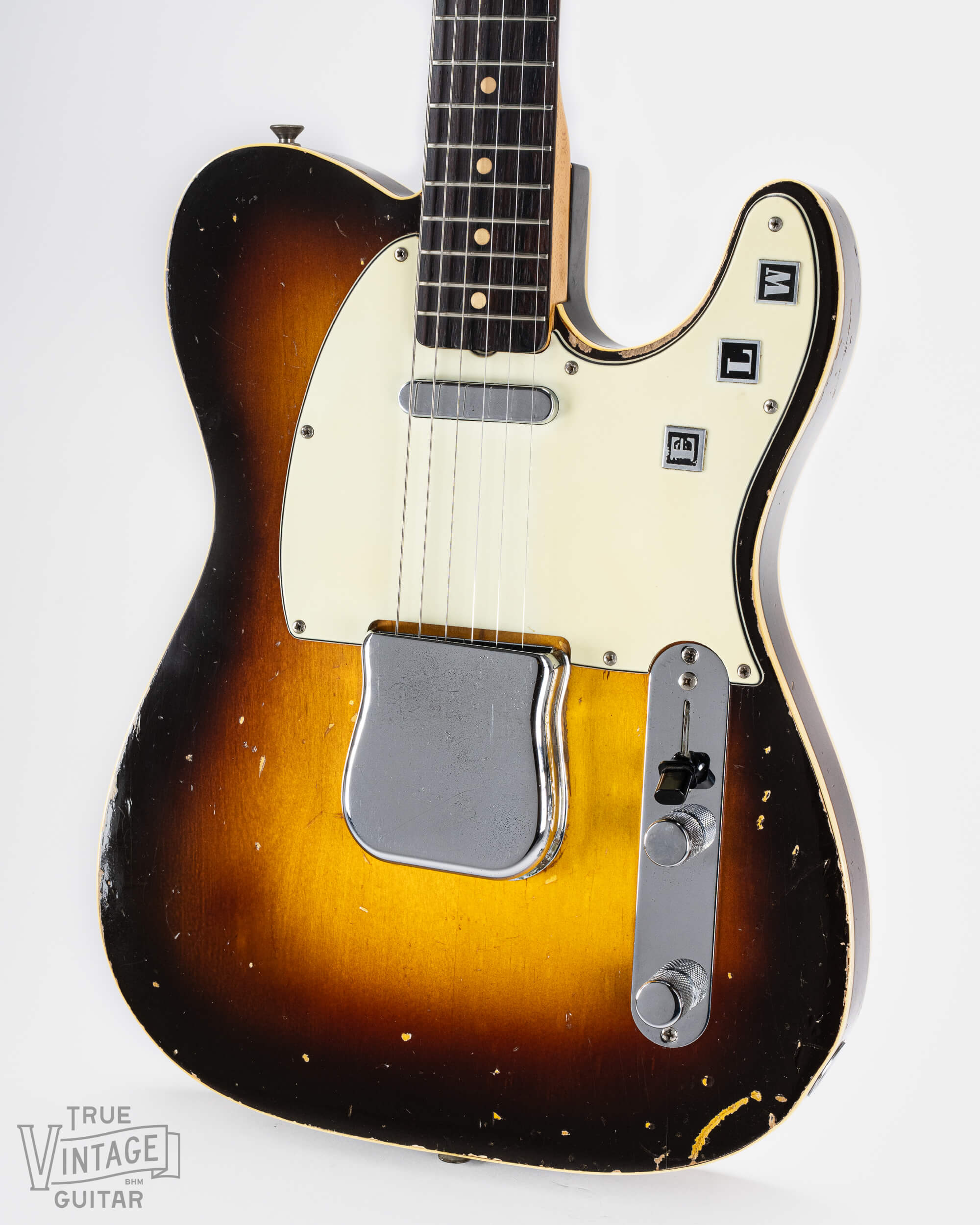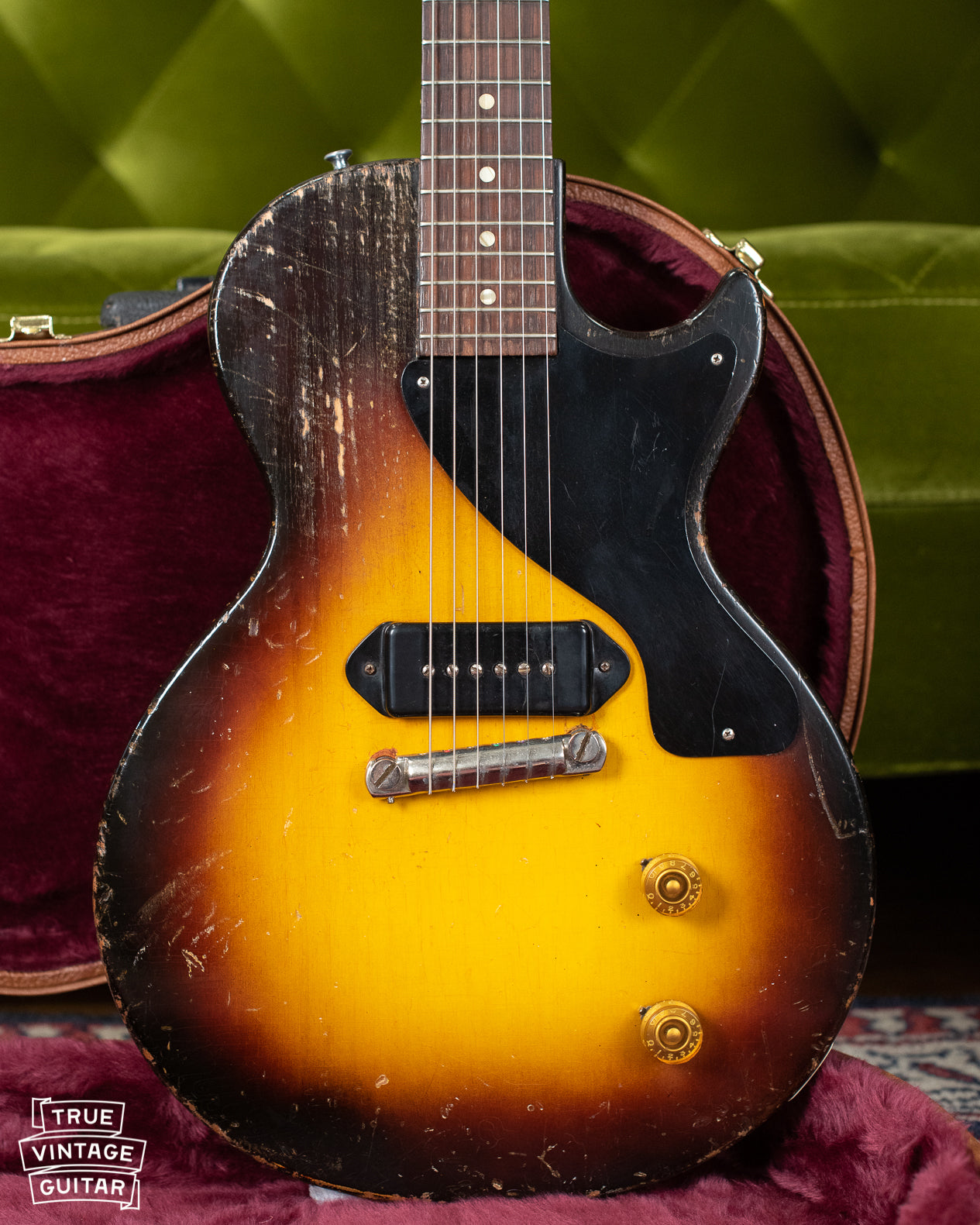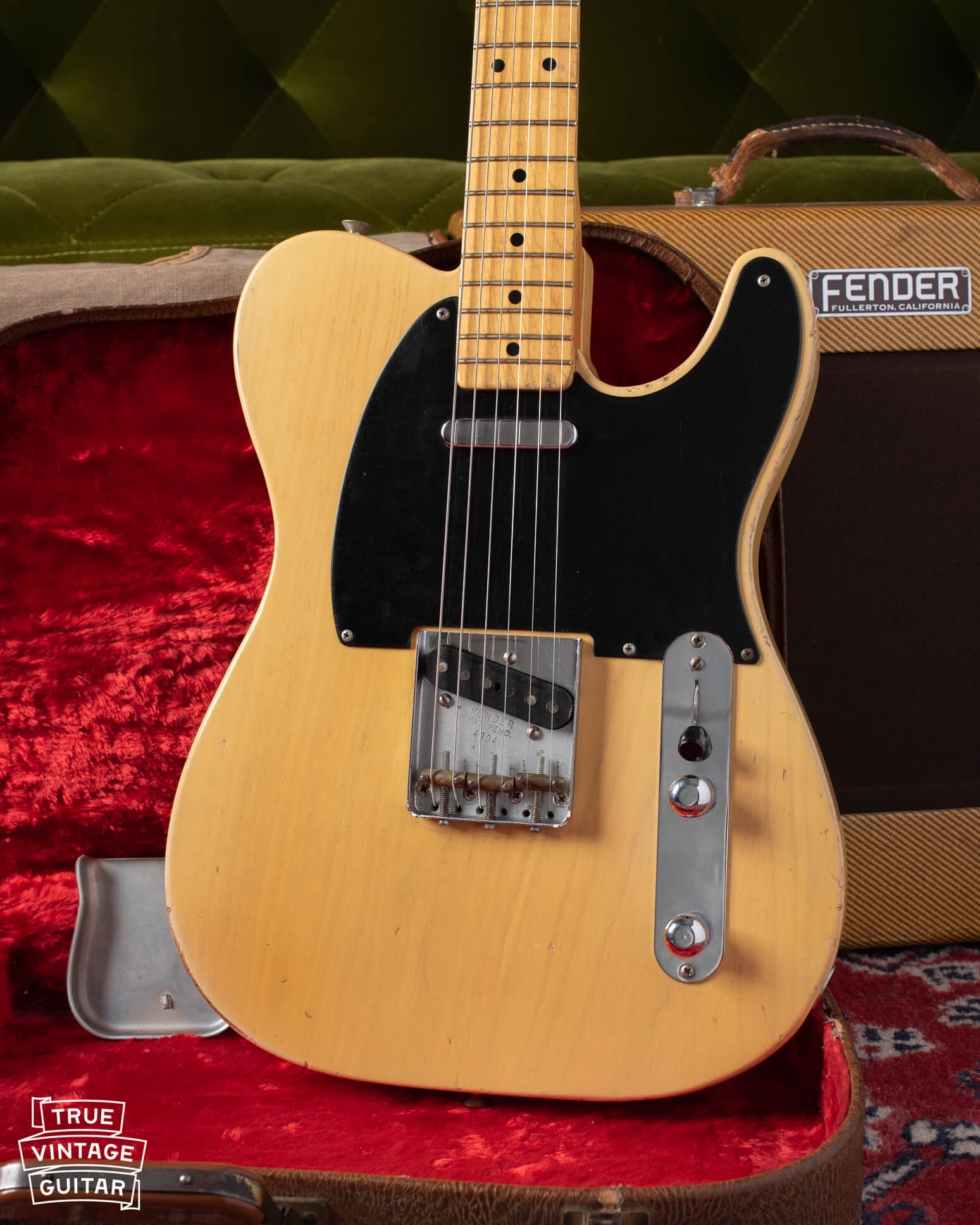Fender's Custom Telecaster model came about in the late 1950s in an attempt to attract some electric guitar market share away from its largest competitor. To accomplish this, Fender took the standard Telecaster model and added edge binding to the body - white strips of plastic inset into the wood on the top and back edges of the body. Instead of the standard Blond finish, Fender offered a Sunburst finish standard which its competitor was also known for. The most interesting bit of history for this model is that another competitor was responsible for helping to manufacture the guitars with binding: Fred Martin of CF Martin and Co!
You can contact me here if you're considering selling a vintage Telecaster: Sell a Fender.
Helpful links: How to date a Telecaster

What is a "Custom Telecaster" 1959-1966?
The Custom Telecaster was a fancy upgrade from the standard Telecaster model which incorporated double edge binding, a standard Sunburst finish, and Alder wood standard instead of Ash. Fender introduced the model in 1959 with "Custom Telecaster" model name on the headstock, but in the price list, it was listed as "Telecaster Custom". In other respects, the Custom Telecaster was exactly the same as the standard Telecaster model until its discontinuation in the early 1970s.
My personal favorite time period for the Custom Telecaster are guitars made from 1959 through 1966. You can contact me here if you're considering selling: Sell a Fender.
 |
 |
How much more expensive was the Custom Telecaster?
Fender's price list from 1959 is a fascinating bit of paper and frustrating at the same time. If only we could buy a 1959 Custom Telecaster for the same price as this list! Check out the Spanish Guitars section of the price list below to see that a Telecaster Custom price in 1959 was $229.50. That's significant because the Fender company itself referred to the model as both Custom Telecaster and Telecaster Custom! The standard Telecaster model was only $199.50, so the Telecaster Custom was $30 more expensive.
The value of a vintage Custom Telecaster has far exceeded inflation: Sell a Fender
What's also interesting is the little symbol next to the model name "Telecaster Custom (dual pickups) Sunburst finish. The small cross symbol indicates that the model was offered in a left hand version for 10% additional cost. Most interesting is the lack of the tiny circle symbol - which would have indicated that custom Ducco finishes were available for the model.

Fred Martin and the Custom Telecaster Binding
There's a great little anecdote about Fred Martin's involvement with the edge binding for the Custom Telecaster Fender: The Inside Story by former Fender employee Forrest White. Forrest tells the story of how he was invited to the Martin guitar factory and shown the process of how the binding was cut and applied to guitar bodies. Forrest says that Fred took interest in him and was kind to show them the process, even if they were sort of competitors at the moment. Can you imagine?
You can read more about that story in the book at the link above or at Tony Bacon's article here: https://reverb.com/news/interview-fenders-forrest-white-bacons-archive
What does a 1960 Custom Telecaster sound like?
I was lucky to have a beautiful example of a 1960 Fender Custom Telecaster in the shop recently to hear what it sounds like. You can watch the video below to hear it:
Here's the transcript of the video:
"I've always wanted one of these guitars. I've seen them from afar and thought that they are the coolest looking guitars. I had an Esquire Custom in the past and I loved it, but it was wrecked. It had replaced pickup and neck issues. We were able to resolve all of them, but it wasn't as clean and nice as this one from 1960.
This is a Fender Custom Telecaster. Technically, if you go by the headstock, it's a Custom Telecaster, not a Telecaster Custom. Although, if you look in the price list, I believe it says Telecaster Customs. So, whatever combination of the two you prefer, leave me a comment down below and let me know what the actual name is. I would love to hear it.
I got a call from this guy and he said he had a 1960 Telecaster. He sent me pictures and I saw the Sunburst finish and the double bound body, and I knew it was a Custom Telecaster. Fender started doing these in about 1959. I believe Fender actually reached out to Martin for help binding the bodies.
This one's been played. I bought it from this guy's son. His dad's name was Edmund, so that's what the E stands for. I didn't ask him about the other two letters. It's a really clean and nicely original guitar, but not 100%. I noticed that it had a replaced volume pot and a replaced capacitor. I had a 59 date code volume pot in my part stash, so I installed that. It's in great working condition and looks nice. I'm not trying to trick anybody. I replaced it myself and I'm a little proud of my solder work. Let me know how I did.
I hated the capacitor I put in there. It's a phone book capacitor, but it's not a very good reproduction. It's just the best I could get. It does the job exactly as it's supposed to and kind of gives it a vintage look. Those are the only two parts that have been replaced. Elsewhere, it's 100% original and a really nice playing example.
I love how Fender did the sunbursts on the Telecaster Custom. They have like kind of the lightly bursted kind of light brown side and the kind of dark black dark sunburst. This one's from 1960, kind of mid-1960. We intended to get a look at the neck heel, but the neck was so tight in the pocket that we didn't want to mess with it, so we didn't take the neck off. You can just kind of see with the pickguard off that it does say 60 inside there. Of course, we got the potentiometer code. I'll put that in the listing if you want to check it out.
It also has a beautiful slab rosewood fretboard. Slab Rosewood fretboards came out from 58 all the way up to 62. That's when they changed to veneer Rosewood. If you want to be able to spot it without knowing what year the guitar is or anything, you look for this piece right here where the Rosewood meets the maple at the headstock. The slabs are going to kind of have a convex shape towards the headstock, whereas the veneers are either going to be straight or a concave shape.
This guitar has a Brazilian Rosewood fretboard and the vulcanized fiberboard dots, also known as clay. It's really clean underneath the bridge cover. The original pickup is just kind of green lights all around on this guitar. I personally love the personalized letters on the pickguard. It could have been a dealer addition. Hey, if you want to personalize your guitar, we'll put these letters on for you. Or who knows, really? Don't know exactly where they came from, but they're not Fender pieces. I thought it was so cool, I would never remove it from a vintage guitar.
It still has the original Fender Telecaster wiring from 52 to 67. All the way back to the bridge pickup, volume and tone, middle is just the neck pickup volume and tone. All the way forward is the mud cap, so it's meant to mimic a bass guitar. It's not my favorite sound to play on a vintage guitar, but it's still there because we try not to modify wiring where we don't have to. However, if you want me to modify it for you to kind of a modern style wiring where you have a standard middle position, I'd be happy to do that for you.
This guitar has the pickups out of phase from each other. 1960 is the year where Fender reversed the polarity of all their pickups. So it's possible it's a result of that. I'll have to get my polarity tester and find out.
So, if you want to run these pickups in parallel, you can kind of cheat the switch, so you kind of wedge it in between the bridge and the middle positions, and you're going to get both pickups on. Interestingly enough, about this one, the pickups are out of phase from each other. 1960 is the year where Fender reversed the polarity of all their pickups. So it's possible it's a result of that. I'll have to get my polarity tester and find out actually. Let me do that.
Alright, we're back. Here's the magnetic polarity tester. It's going to be a link down below if you want to pick one up. It's like $8 on Amazon here in the states. It's really fun. I love when you're like figuring out why your guitar sounds certain ways. This can be helpful. 1960s the year they changed the polarity of all the pickups. So the bridge pickup attracts the North Pole magnet. That means it's a South to Strings pickup. You see the blue, the South Pole sticking straight up. Now if we go to the neck, it's attracting the North Pole magnet. So that is a South D String's pickup. They're out of phase because the magnets are pointing in opposite directions. So if you want to do that both pickups on, cheat the switch, we get out of phase sound kind of fun to play on a Telecaster out of phase is going to sound thin and quacky. May not be your favorite, but you still got that bridge pick up exactly the way you want it.
So that's the 1960 Fender Telecaster Custom, factory original Sunburst finish with the double bound body. Love it! This is the stuff dreams are made of. I'm so thrilled to have this guitar and to show it to you guys and to present it for sale. So if you're interested in a Telecaster Custom, you can check out the listing for this one below at my website Truevintageguitar.com. My name is John. My shop's called True Vintage Guitar. We're here in Birmingham, Alabama. We've got a ton of vintage 50s and 60s Fender and Gibson guitars primarily. A couple of flat tops every once in a while, but primarily solid body electrics and semi-hollows. So yeah, this is exactly the type of guitar I love to buy. So if you have a 50s or 60s Custom Telecaster, reach out to me at my website. I'd love to take a look at it. Or if it's not one I'm interested in, I might be able to connect you with someone who might be. So thanks so much for watching. If you enjoy talking about vintage guitars and looking at them, I'd love to have you subscribe to the channel. We're doing about two videos a week. We just did one of an amazing 1959 Gibson ES-355T, the mono version. Incredible earliest side pool I've ever seen. So anyway, hit subscribe now. Thanks so much. Happy to have you guys. Thanks for watching."



